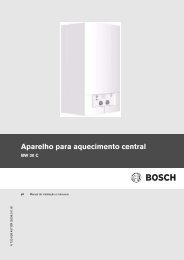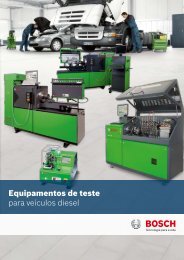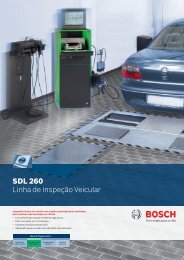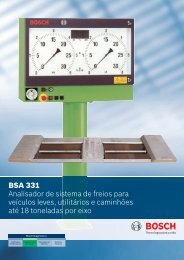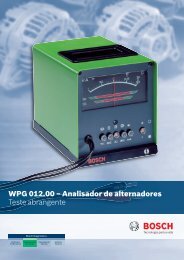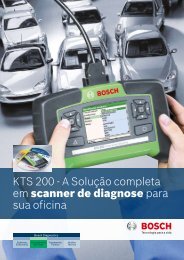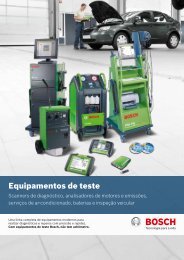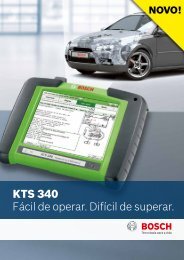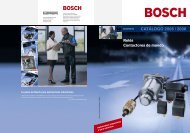Bosch Automotive A product history
Bosch Automotive A product history - Bosch worldwide
Bosch Automotive A product history - Bosch worldwide
- No tags were found...
Create successful ePaper yourself
Turn your PDF publications into a flip-book with our unique Google optimized e-Paper software.
38 | Supplement 2 | Journal of <strong>Bosch</strong> History<br />
Not just a matter of horsepower<br />
<strong>Bosch</strong> gasoline injection systems<br />
As early as 1912, <strong>Bosch</strong> began experimenting with gasoline injection. From<br />
1935, its safety and superior performance made it the obvious choice for aircraft<br />
engines, which until then had generally used carburetors. Gasoline injection<br />
was still too costly for cars, though, and the less expensive carburetors remained<br />
the standard solution for the time being. Series <strong>product</strong>ion of gasoline injection<br />
systems for motor vehicles was not possible until the 1950s, following further<br />
progress in their development. Gasoline injection’s performance-boosting<br />
features were a point in its favor as far as motor-racing and high-performance<br />
sports cars were concerned. From the mid-1960s, however, its other strengths –<br />
lower consumption and reduced emissions – counted even more. Together with<br />
its successor models, the electronic “Jetronic” system launched by <strong>Bosch</strong> in<br />
1967 made gasoline injection the dominant system in the market, completely<br />
displacing the carburetor. In conjunction with electronic control, gasoline injection<br />
in cars paved the way for the widespread installation of controlled three-way<br />
catalytic converters, which in turn made it possible to comply with the toughest<br />
environmental standards.<br />
The jet from an<br />
injection nozzle<br />
for the <strong>Bosch</strong><br />
DI-Motronic<br />
gasoline direct<br />
injection system<br />
(2005).<br />
In 1912, researchers at <strong>Bosch</strong> began to<br />
take a closer look at gasoline injection.<br />
What they wanted to achieve was a precise<br />
metering of fuel to stationary and vehicle<br />
engines. By that time, the spark-ignition<br />
engine had already become the standard<br />
drive technology in motor vehicles. It had<br />
long been acknowledged that the steam<br />
drives favored around 1900 had no future<br />
for road traffic, and diesel engines had not<br />
progressed far enough in their development<br />
to be an option. The experiments with<br />
gasoline injection were not a focal point,<br />
though, and soon lost impetus. The com-



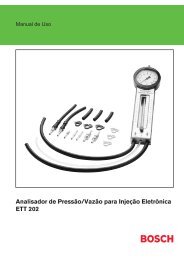

![Guia de instalação do ESI[tronic] Startcenter - Bosch](https://img.yumpu.com/53542449/1/190x135/guia-de-instalaaao-do-esitronic-startcenter-bosch.jpg?quality=85)
